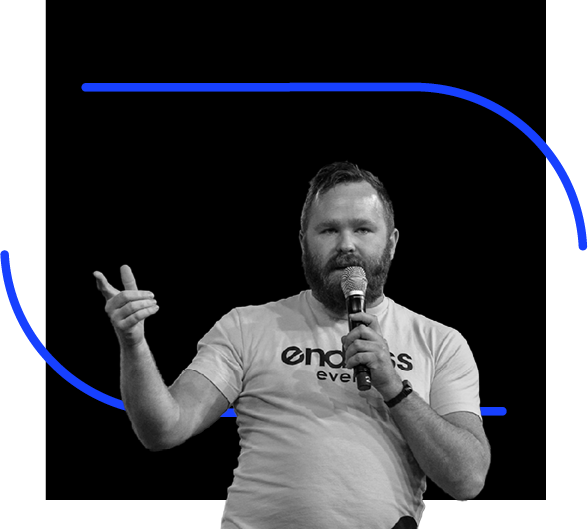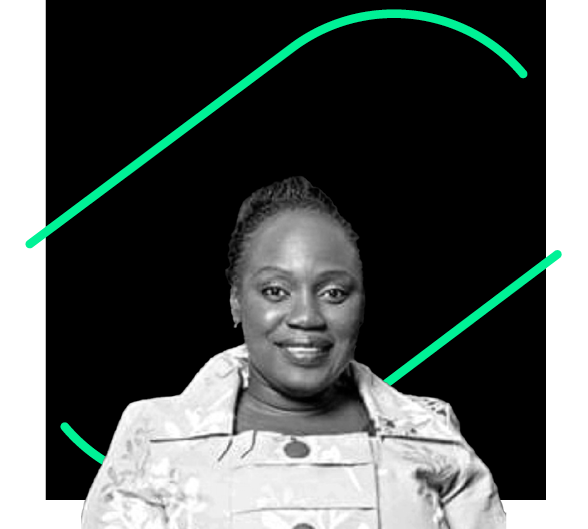Event Mender B.V. | KVK: 87753677 | Herman Robbersstraat 94D, 3031RK, Rotterdam
© 2023, by Event Mender bv

If you’re an event professional, it’s no secret to you that the event landscape has gone through a radical transformation. Whether you’re excited about going back to the old normal or ready to embrace a new chapter in the event industry, you can’t ignore the rise in hybrid events. A large part of this comes down to the newfound flexibility the hybrid events offer.
Planning a hybrid event can be tricky – especially with all the different formats available. Without the right considerations and tools, you’ll likely encounter recurring challenges in the process. To help, we asked over 50 industry thought leaders to share their best advice for organizing a hybrid event that runs as smooth as butter.

Engaging the online audience is key since they are very easy to lose. To get some inspiration and how to brief your moderators and speakers, pay attention to the moderators in TV show. They always look into the camera, address the remote audience and give them more attention than the people in the studio. Make sure to take the questions from the in-person audience first due to the latency and when covering questions, say their names to make them really feel part of the experience.

Dont try to engage the online/offline audience with no reason. I don’t think you need to have opportunity for online and offline audience to engage with each other when planning a hybrid event. Sometimes, it might not be a bad idea to separate them. You just don’t forget you have a different group of audience online.

As a virtual/hybrid DJ for enterprise events, my tip relates to engaging and entertaining a hybrid audience. I’ve found it best to focus most on engaging the virtual audience. Virtual attendees have shorter attention spans because they can click to another tab or close your window at the first sign of boredom. The in person attendee is less likely to get up and leave the space as quickly. If you can hold the virtual attendees attention, you’ll likely also be engaging the in person attendee with all of the added on-site stimuli.

The secret to success for creating an amazing hybrid event includes much more than audience engagement. A successful hybrid event requires a 360 infrastructure to serve all stakeholders from speakers, sponsors, attendees, and event staff. Put just as much energy into your back-channel communications plan for your next hybrid event as you do the front-of-house experience.

1. Start with a digital first mentality to ensure the virtual isn’t an afterthought. 2. Start small. Focus on the goals and on what you do well and expand from there. Hybrid doesn’t have to be all or nothing. 3. Ensure the attendee journey is consistent, but it doesn’t have to be exact. Think of a sporting event. The live experience is designed a certain way and extended to the TV audience with a host supporting the experience. Hybrid no longer has to be 1:1. Design the agenda to ensure no attendee is left behind.

The digital experience and the in-person experience don’t need to be one and the same. It’s okay for digital attendees to have one event journey and in-person attendees to have another event experience. Try to allocate different resources to be responsible for the in-person experience and the digital experience. This maximizes your chance of both audience types having a fantastic experience, instead of one person being thinly stretched to cover both. If you only have one headcount available, support them in splitting their time, budget and focus appropriately.

Instead of going *back* to in-person events, we should be going *forward* to something new, more efficient, more sustainable. Hybrid is a divisive term and tends to make eventprofs think that it doesn’t apply to them. But it’s just a word. The concept is true. We should be running physical events with a tech-centric approach. It would be a detrimental error to run events like it’s 2009 again… In short, give your audience online access. Capture audience data on an online platform. Have a handy mobile app for onsite visitors. Provide your exhibitors with more data than they can handle. And all the while, you’ll be providing a better experience to your audience and reducing your carbon footprint. We need to build back better for tomorrow’s events industry.

My top tip is to make sure you understand what every different category of participants will experience (see/hear) at each point in the event. This includes speakers, sponsors, moderators and of course the participants, but both the onsite and the online ones. This will help make sure the journey for each is positive and consistent. And never assume that anyone has read the instructions or will be there early or stick around for any longer than they have to.

My one tip is to level the equality between virtual and hybrid attendees. Design great experiences for both. Stop putting them on separate platforms, put them on the same platform. Make your presenters address and call out the names of the virtual attendees who are chatting. And find ways to design it so in person attendees can meet virtual attendees.

Be careful when you have separate parts of an event virtual a physical. In these cases, we’ve seen it’s best to separate in-person and virtual parts of an event into separate days. Example: recently an event we attended had 2 virtual days before the live event began, and then finished with another day of virtual at the end. However, always make sure the live and virtual audiences can still connect.

With any event, we start with – who is it really for and what are the desired outcomes? And work backwards from there. I think it’s key to remember that hybrid events don’t have to happen at the same time when thinking about how the content should be delivered, and that as with any event, there are two main areas that can make or break for your attendees – broadcast quality and sensory engagement. Budget for your online guests to have just as good as an experience as those attending live – in terms of what and how they’re watching/engaging with content and in terms of them having something tangible, sustainable and memorable to engage with at the same time.

Make sure you make the most of the digital content you have. There are so many ways to make the most out of that content and all too often, even in a digital world, organisers only use that content once.

My advice is to really agree on the objective of organising an “event”. For me an event is more than just a series of sessions, a question I am asking now with many organisers to think about the why is the following.The content that you are producing and organizing for this event, why can’t it just be a on-demand series on your website or why can’t it be a podcast? That hopefully helps focus on why they are brining people together and why they are requesting peoples time and focus.

So to organise a hybrid event, you REALLY need to assemble a team of experts who know what they’re doing, how the tech works and how to bring everything together to create an experience/interaction. Having a broadcast of a live event doesn’t make an event hybrid. RECOGNISE that your event is going to evolve – even on the day – and that you need to flex with it. Be PREPARED to invest time, energy, effort and money on your hybrid event so you need to be ALL-IN.

It is important to acknowledge and understand that the in-person audience and online audience will have a different experience. This doesn’t mean there is a need to make two different, separate events, but it does require individualisation of each experience. For example, providing an exclusive host for the virtual audience who will entertain them whilst the in-person audience have a networking lunch.

With hybrid events, it’s more important than ever to have a skilled host who can help attendees navigate their event experience. As a professional host, this is not exclusively self-serving. Even if you’re not going to hire someone like me, I still strongly recommend you select someone internally who is comfortable and capable on-stage AND on-camera. With a multi-platform production, they need to: have the ability to clearly communicate the Agenda to keep people engaged; think on their feet to manage unexpected moments and challenges; and bring the in-person and digital audience together as a community whenever possible through their performance.

It is vital to understand that your in-person and your online audience will need a different engagement approach. Make sure that every participant, offline and online, feels included. Preferably with two very experienced hosts that cater to each audience. Also, make sure there is enough interaction and connection during parts of the event that overlap and consider that you’ll need a higher budget. In essence, you are organizing two different events.

The last few years have caused a dramatic shift in attendee expectations – the shift to virtual, and the introduction of ‘hybrid’ has redefined what engagement means for events. The challenge is creating a consistent, memorable experience for every single attendee – regardless of where or how they attend. Marketers and planners need to put laser focus on what they hope their event will achieve. What is the end goal? What do we want attendees to walk away with? Then, strategically plan for ways to meet that goal in the most direct, engaging (and fun) way possible. This may mean pushing the boundaries of traditional event formats – everything from length of event, to content to speaker format and tech requirements. By throwing away the rule book – marketers and planners will find that they’re able to be more effective and creative and their attendees will be more focused and engaged.

My tip for organising a successful Hybrid Event is understanding what the tech does. We are in an era that requires us to curate attendee experiences through engagement. Be open to reaching out to a few vendors about those crazy ideas and stack the tech. It is okay to use different vendors for different experiences. The current abundance of options means somebody somewhere is willing to work with you to come very close to your “crazy” and at a reasonable price tag. If you haven’t already, get yourself the books from The Event Collective, their Event Canvas has changed my life. It has allowed me to offer value to all stakeholders involved.

When creating a hybrid event, I like to think about what each audience is doing at every point of the event. As I think about what the audiences are doing, I plan for the directions each audience will be given and who will deliver those directions. Having two separate emcees is really important but they have to connect to each other at times. Also, it’s important to bring the audience at a distance into the live event at some point. They can’t just be passive consumers; I want them to be active contributors. I’m currently thinking a lot about the hub and spoke model where lots of little groups will collaborate on creating a larger experience. I’ve done this a couple times, and it is promising! We’re in the infancy. Cool things are coming soon!

A hybrid event is not sharing event recording or video on demand after the physical event is over. A hybrid event is an integration of both virtual and physical audience experiences throughout the event. Therefore, in order to ensure a great virtual experience in a hybrid event, a virtual host(s) is/are very important in order to interact or engage with the virtual audience. The virtual host(s) can better interact with the virtual audience through random engagement activities or segments exclusively designed for the virtual audience only, virtual host(s) can also be the unified voice for the virtual audience, and it is more convenient for the virtual host(s) to read comments from the audience as compared to the emcee who is on the live stage in the event venue.

Be clear in your marketing strategy from the start. Hybrid events are innovative and dynamic, and need to be broken down for your guests. Make sure the goal of your event, target audience, sign up details and benefits of attending are clear from the get-go. Don’t just let attendees decide if they want to attend, create a marketing strategy that already decides for them.

Accept that you don’t know how this new world looks. Start simple and keep adding more online elements to your physical event (or the other way around). Utilize your target audience’s feedback and communicate in a transparent way that you’d like to learn, together with them, how hybrid elements can add the most value to your events.

Speaker Preparation & Rehearsal — to achieve a gold standard rated presentation, track or keynote from your online and offline audiences, you’re going to need to put in the work before you pick up the mic. Remember… audiences are overloaded with the bombardment of content both professionally and personally. Ensure that your content is carefully curated to appeal to both sets of attendees, always keep this in mind. Practice it, test it out in advance, become comfortable with the tech arrangements, venue set-up and get feedback from the event producers before going live. Bottom line, nobody wants to go home with fools gold. Yes your audiences like things to be shiny and well polished but they’ll be the first ones to sense if you’re just digging up dirt.

My #1 tip when it comes to having a successful hybrid event is to find your production team first. In hosting a hybrid event, you’re signing on to provide two different viewer experiences. A skilled production company will be able to help you navigate the waters of both the in-person and virtual shows. Bringing production in early means having help picking the event platform that will work best for the show you want to have, setting ticketing prices so both viewing experience production costs are covered, and getting tips like having the venue include internet in your event contract (which can be a huge budget saver).

My top tip for event organisers is not to think of Hybrid as an Event type but instead as a strategy. The hybrid strategy is to start thinking of virtual and in-person experiences as being part of a single holistic personalized omnichannel experience. An experience that transcends events and creates a sense of belonging for all people that are part of the community using events but also content, connection and discovery in new innovative formats to bring people together.

My top tip for organizing hybrid events is to think about the events separately; yes, they’ll have a similar tone, theme, and pace–but they ought to be thought of individually as the attendees will be quite different at each. For those attending in-person, they will have the opportunity to see, hear, and vibe off of fellow attendees and will typically have a different engagement than those attending virtually. For those joining remotely, their attention will be much more limited as they’re–at any given moment–being pulled myriad ways. Once you change your paradigm of who is attending as well as how and why they’re attending, you can create your agenda.

The key to a successful hybrid event is to first plan an amazing in-person experience then focus on building a very user friendly virtual experience where someone can seamlessly watch the event from anywhere. Added interactivity is great but the benefits must outweigh the additional time, costs, and attendee requirements.

My top tip for organizing a successful hybrid event is that you first determine what “hybrid” means to you and your intended audience. Maybe even stop using the term “hybrid” and instead focus on getting a full understanding of what your audience needs, when they need it, and the best format to deliver it!

A successful hybrid event starts with a hybrid design. The most common mistake is to build an in-person event and add a virtual component to it to make it hybrid. More often than once, the virtual component is a limited version of what the event is about and translates to some kind of a broadcast of the in- person event. Designing hybrid requires a different thought process. Start with your goals and vision for the event as you would design in any other format and build the tools in order to achieve that vision. Build with emotion, design the dream scenario and only then find the tech solutions to make that happen. We are a creative industry. Dare to experiment. Hybrid success is the value we manage to create by delivering to higher creative standards, combining connectivity with entertainment and engaging content. Design with passion and your event will live on with the surprise and enchantment of your attendees.

In-person and online attendees connect differently, and hardly with each other during the event. Try free flow/live networking between online attendees and structured/scheduled meetings between in-person attendees. Promote these different activities in the agenda for each group.

Not every component of your event needs to be hybrid. Figure out where it makes sense to incorporate hybrid experiences and interactions so they support a specific purpose and are used intentionally. It’s all about making the ‘bridges’ be of value for your attendees.

Work your hardest to align your virtual and in-person audience. Give the same value to both audiences to ensure their experience is as similar as possible.

Make sure to find a flexible all-in-one hybrid event management platform to run your event.

When organizing a hybrid event, in essence you are creating two different experiences for in-person versus virtual attendees. Some aspects can be the same, such as content, but networking is totally different. Expectations from your on-site attendee are going to be very different from virtual. Make sure you know the expectations of both.

Use your Marketing Automation as the source of truth, rather than the event platform. For registrations, for emails, sms etc. This is fundamentally more powerful and gives you better options than simply running the whole thing through your virtual platform. It does require more work -your Marketing Automation to be integrated with your virtual platform and emails flows need to be built. However, in terms of crafting the best attendee experience, it also gives you many more options. The last thing you want is two weeks out to an event, realising that you can’t do X or Y, which is important to a good experience. Go with the max power from day 1 – you won’t regret it.

Hybrid events have no borders. People of all races, backgrounds and cultures can partake no matter where they reside. That is the beauty of technology in this ever changing climate, so make sure to have an inclusive event approach.

Enable small group conversations. With an online audience, just like with an on-site audience, you can optimise the 3 basic needs for participants: learning, networking and fun. Simply let the participants discuss, in small groups, what was presented. Do this two or three times 10 minutes an hour. On-site around small tables or with the people behind them, and On-Line in the break-out groups of 6. This way you double the knowledge, create 1,000 times more networking and introduce a good dose of energy and fun.

When organizing a hybrid event, the key is recognizing that your two audiences, virtual and in person, want and need different experiences and respecting those differences enough to staff and plan accordingly. Because hybrid is a lift and more costly, typically internal teams will lean into one experience more because bandwidth can be tight. So, awareness of audience needs on the front end combined with resourcing properly allows you to then build experiences with the right content, tech and creative elements that will genuinely be worthy of audiences time. You need a true product first mentality because once marketing and sales begin to deploy and amplify the question audiences will always ask, given the levels of saturation, is “why”. They are going to make critical decisions based on time, location, need and desire and require a crystal clear understanding of the value asap.

From a production standpoint, when it comes to organizing a successful hybrid event my top tip is to bring the technical event producer or the production manager into the conversations as early in the planning process as possible. A technical event producer that’s had many virtual and hybrid events under their belt, not only will they add value to your planning through their experience and expertise but will guide you away from some of the common pitfalls of hybrid events that they’ve seen and experienced. You want their input, you want to have them be an extension of your team, you want them included in those important conversations, and even if the initial plan is nowhere close to the end game since you’ve established a relationship and a rapport now with them, I guarantee you, they will be your best advocate in the negotiation process with the technology platform and the AV production team which will, in turn, save your budget unnecessary wasted money. That’s my top tip because I’ve seen again and again, in my role, how that small of a difference makes such a large impact on the overall success and execution of a hybrid event.

By its very definition hybrid can be the best of both worlds. Remember the advantages that each event format offers. Live encourages spontaneous networking, meaningful connection and opportunities to connect outside of the content, whilst still immersing your audience in an objective specific environment. Virtual extends your audience and speaker reach, whilst minimising environmental impact and fine tuning the design of how you want your audiences to interact with the content and each other. As you design your hybrid event, ensure the technology you use can target relevant content to the different audiences, whilst also combining data and interactivity to provide feedback from both the live and virtual attendees. Use a mobile app and virtual platform that are seamless. By using the tech as a tool to not only host content but to capture data, for example live polling and surveys, you are also connecting the attendees, and allowing the virtual audiences to become an engaging and important part of the event.

Be clear in your marketing strategy from the start. Hybrid events are innovative and dynamic, and need to be broken down for your guests. Make sure the goal of your event, target audience, sign up details and benefits of attending are clear from the get-go. Don’t just let attendees decide if they want to attend, create a marketing strategy that already decides for them.

Like any event, whether it’s in person, virtual or hybrid, you need an effective website to promote it. It can set expectations of what’s to come, showcase the speakers, exhibitors and sponsors, and be at the base of your marketing strategy. You may be using the best tools on the market, but you still need to tell visitors what the event is about, why they should view the hybrid content and how to access it.

Stop, design your event first, as the process will eliminate all confusion and give the best options. Whether your event needs to be hybrid, online, in-person, community-based, or not, using Zoom or the most expensive combination of in-person and online will be decided in the design process.

Marketing events whether hybrid, in-person or virtual, needs to shift from feature-driven marketing to people-driven and people-powered marketing.
It is the WHO will be there not so much how many (attendees, speakers, sessions). In most events I go to, I don’t even go to sessions. I hang out on the show floor, the lounge, meeting select few that bring me the most value in terms of experience, connections, and personal rewards

Here is my two cents on a top tip: Don’t treat onsite and online participants the same way. Separate the programs for these audiences and make sure they have the best experience on both side. Onsite participants would be taken care of with the greatest care, and online participants should have a smooth experience adapted to their way of participation. My suggestion is not just stream a live event, because online guests will be bored and feel left out; and don’t just bring some online participants ‘onsite’ with involving them in the Q&A because the engagement will suffer on both ends. Strive for excellent experience for the different audiences.

Be sure to have an event strategy for both your in-person and digital audiences, including if and where it makes sense to connect the two. Do not force connection as you must understand the motivations for why each audience chooses to attend your event and in that particular format. If there is to be any connection, be sure that it is intentional and specifically designed to bridge the gap between the two audiences. It is possible! Crowdsource what is of most interest to your participants, see where dialogue and engagement could be designed, and connect the audiences this way. By listening to what your audience wants, not only will it better align with their personal/professional goals and objectives, but it also makes for a more engaged experience + ROI for all.

Hybrid events don’t necessarily mean they have to happen simultaneously. Consider each stage of the event cycle: strategy, planning, production, and debrief and how each stakeholder is best aligned for the event on-site and virtually. Bringing in the production team and developing the tech stack as a part of the strategy and planning helps for a more efficient and cohesive production experience. Having your production team in the loop helps to streamline the transition from planning to production and ensure the equipment (both software and hardware) are programmed as you intend.

For in-person, virtual, or hybrid events, remember to plan for failure and prepare for each audience platform. Design and prepare a hybrid experience that will engage both of your audiences. Add a virtual emcee to represent and connect the virtual audience to the in-person hosting team. Encourage cross participation using an event app or polling program. Having a solid and detailed communication plan and run of show ensure that the entire team knows what is going on in both environments. Having a Plan B, C or D will save you when you face technical issues such as slow or failed streaming connections. Have a simulive pre-recorded version edited and uploaded – ready to go if you need it. I will record the dry rehearsal- you never know when you will need it. This one task has saved my hybrid and virtual programs.

My number one tip would be to confirm if a “Hybrid Event” is the right style of event for you and more importantly your audience?

Make sure that you know, understand, and feel your audience. What changes would you like to achieve for them during your event? What measurable goals do you have for yourself? Build the story of your event, including pre and post elements for each target audience you have. Think about multiple storylines, online and offline, or for different types of visitors. The most important part is to think from your audience’s perspective.

As a brand, your hybrid event has little to no ROI if you haven’t predetermined (a) your primary stakeholders, (b) the key success/failure metrics for these stakeholders, and (c) the primary audience these stakeholders are investing in (through your event). Thus, the easiest way to truly fail a hybrid event is to try to please everyone and not measure the right activities. Because then all the engagement and scale you’ve achieved will evaporate within days. Which is a much greater failure than any technical difficulties or attendee issues you may have had.

My top tip for organizing a hybrid event is not to get so mired in logistics that you let the content fall through the cracks. Perhaps create different tracks for the in-person or virtual audience by polling these attendees pre-event to see what their preference is. And after the event is over – treat the recorded content like a streaming service does: create attention grabbing trailers for your most successful sessions, and occasionally add new “seasons” aka an update from that speaker with additional insights.

“Producing a quality hybrid event is more than just sticking a camera in the back of the room and calling it “hybrid”. It’s about creating connections between your in-person and remote audiences, making each of them feel like they’re a part of the event, and not just a passive observer.”
—
A massive thanks to all the people who contributed to this topic and shared their best advice to help the industry create wildly successful hybrid events.
Check out the Event Mender Marketplace and get a shortlist of options in under 4 minutes.
Event Mender B.V. | KVK: 87753677 | Herman Robbersstraat 94D, 3031RK, Rotterdam
© 2023, by Event Mender bv
| Cookie | Duration | Description |
|---|---|---|
| cookielawinfo-checkbox-analytics | 11 months | This cookie is set by GDPR Cookie Consent plugin. The cookie is used to store the user consent for the cookies in the category "Analytics". |
| cookielawinfo-checkbox-functional | 11 months | The cookie is set by GDPR cookie consent to record the user consent for the cookies in the category "Functional". |
| cookielawinfo-checkbox-necessary | 11 months | This cookie is set by GDPR Cookie Consent plugin. The cookies is used to store the user consent for the cookies in the category "Necessary". |
| cookielawinfo-checkbox-others | 11 months | This cookie is set by GDPR Cookie Consent plugin. The cookie is used to store the user consent for the cookies in the category "Other. |
| cookielawinfo-checkbox-performance | 11 months | This cookie is set by GDPR Cookie Consent plugin. The cookie is used to store the user consent for the cookies in the category "Performance". |
| viewed_cookie_policy | 11 months | The cookie is set by the GDPR Cookie Consent plugin and is used to store whether or not user has consented to the use of cookies. It does not store any personal data. |